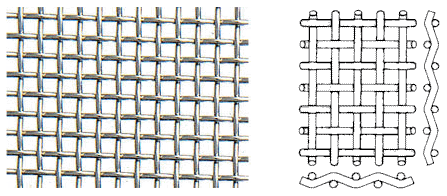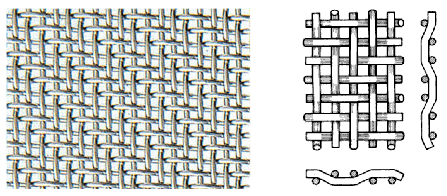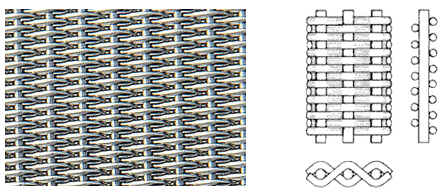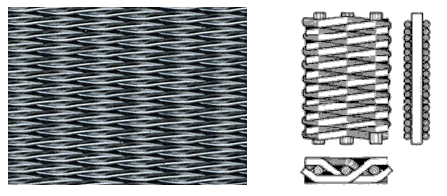Our produces Stainless Steel Wire Mesh from first class stainless steel wire materials in SUS302, 304, 316, 304L, 316L.
General Use: Stainless steel wire mesh, with its excellent resistance against acid, alkali, heat and corrosion, find extensive uses in processing of oils, chemicals, food, pharmaceuticals, also sorting and screening of solid, liquid and gas in mine, metallurgy, airspace, machine making, etc.
Plain Weaving

The Plain Wire Cloth Weaving is the most common wire cloth used and it is one of the simplest wire cloths. The plain wire cloths are not crimped before weaving, and each warp wire passes over / under the wires running through the cloth at 90 degree angles.
Warp and weft wire diameters are generally the same. Used for the majority of commercial applications and for filtration where a high flow rate is required.
Twilled Weaving

Each weft wire passes alternately above and below every successive pair of warp wires and vice versa. This weave permits a heavier wire diameter to be used than would be possible in a plain weave with similar mesh count. This ability allows the application of this wire cloth for greater loads and finer filtration.
Plain Dutch Weaving

Woven as a plain weave but with the warp wires of greater diameter than the weft wires. The weft wires are woven tightly together producing a strong cloth whilst allowing a good flow rate.
Reverse Plain Dutch Weaving

This is the reverse of the Plain Hollander (Dutch) weave. The weft wires are of greater diameter than the warp wires, and consequently the warp mesh count is greater than the weft mesh count. This cloth is extremely strong, is easily cleaned and has a high flow rate.
Twilled Dutch Weaving

Similar to Plain Dutch weaving, except that the weave is twilled, allowing a double layer of weft wires. This cloth is "light tight", has a very smooth surface, is strong, but has a restricted flow rate. There are no apertures in the true sense of the word as the filtrate follows a sinuous path through the depth of the wire cloth. Also referred to as Micromesh and is used for critical filtration applications often under high pressure.

